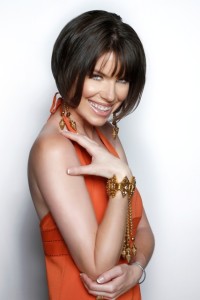 Although I’ve worked with the modeling talent from Ford/Robert Black on various projects I first had the opportunity to meet the owner Sheree Hartwell when fellow photographer Jason Black and myself interviewed her on The Pro Exposure podcast about the commercial modeling industry. I was truly enthralled in the conversation and wanted to do a follow up interview with her regarding talents working with the right agency, getting the right portfolio and what the shifts in the commercial industry have been recently.
Although I’ve worked with the modeling talent from Ford/Robert Black on various projects I first had the opportunity to meet the owner Sheree Hartwell when fellow photographer Jason Black and myself interviewed her on The Pro Exposure podcast about the commercial modeling industry. I was truly enthralled in the conversation and wanted to do a follow up interview with her regarding talents working with the right agency, getting the right portfolio and what the shifts in the commercial industry have been recently.
Sheree Hartwell has been the owner of the Ford/Robert Black Agency for the last decade and has been in the talent management business for the last 15 years. The FORD/Robert Black Agency manages over 350 models and actors for all facets of the model and entertainment industry. Today she is involved in maintaining client relationships, scouting new talent, sending talent over-seas and to national markets outside of Arizona, as well as the day-to-day operations of running her company.
Prior to owning the Ford/Robert Black Agency, Sheree managed the women’s division at CITY Model Management in San Francisco for 5 years. Sheree served as a Regional Director of Fashion Group International Arizona from 2008-2010 and is currently a District Director managing Denver, Dallas, San Antonio, Kansas City, Houston, New Orleans, and Arizona.
She has a Bachelor of Science in both Fashion Merchandising and Advertising from Northern Arizona University. She also volunteers her time to philanthropic organizations including Face in the Mirror, Fresh Start Women’s Organization, and the American Cancer Society. Sheree and her husband Beau live in Scottsdale and have a 3-year-old daughter, Lillian Grace.
Truly hope you enjoy the following interview – special thanks to Sheree for taking the time to share her thoughts.
JAMES PATRICK: Please share a bit about your background and how you came to manage Ford/Robert Black in Arizona?
SHEREE HARTWELL: I have now owned Ford/Robert Black for more than 10 years after buying the company from Robert Black. I began modeling with Robert when I was 12-years-old and I was fortunate enough to travel throughout the US and Europe for modeling while still in high school and college. Once I finished college, I knew that my interests in the industry had shifted to the business side. I took a job in San Francisco and directed the women’s division there for 5 years. I moved back to Arizona to work with Robert and eventually become the owner.
JP: With a surge in the freelance market, the use of stock images, changes in technology, etcetera – how have you seen the commercial modeling industry change in recent years?
SH: The biggest change that I have seen is in the rates that the clients are willing to spend on talent. We used to get fair rates for day rates and respectively fair rates for the usages of the images. Now they want to use the images for a longer period of time and want to pay less! A positive side to the advancement in technology is that there are no barriers with getting to clients. Since all of our talent are showcased on our website, we are able to promote our models to clients outside of Arizona; anywhere in the world. Models used to have to see every client in person before confirming a booking so this has really helped transform the industry.
JP: Overall, what is a talent’s benefit to being signed to an agency?
SH: The talent benefits in many ways by being singed to an agency. The biggest one being that the agency is there to negotiate the highest rates possible for the talent. We are also there to serve as a barrier between the client and model for negotiations. The agency handles all invoicing and collections so this in itself is a huge plus for talent.
JP: How can a talent know if an agency is reputable or not? What are signs to look out for?
SH: In today’s age a lot can be said from doing a bit of research online about the agency. Unhappy people tend to share their experiences so take a look and see what you can find. It is important that agencies have a good payment history with their talent. Ask a lot of questions. It is also important that the talent isn’t paying a load of fees for promotion or signing contracts.
JP: What makes a talent highly marketable to commercial clients?
SH: In the commercial market most of the clients are looking for a relatable look. It is important that the model has a great smile, be consistent with their measurements, and have a great personality.
JP: What common mistakes are you seeing models making presently regarding their brand and their marketability?
SH: Most common mistake models make today is how they are portraying themselves through social media. Many don’t realize that clients will look talent up before they book them on a job or check out their profile to see what they post. Social Media plays a huge role in our industry today. Talent needs to be consistent with their posts and make their posts interesting to other models and clients alike. Many clients are even asking for talents who have 10k followers on Instagram or more!
JP: What can a talent do to get noticed by an agency in hopes of being signed?
SH: Speaking of Ford Robert Black, we have weekly open calls where hopefuls can come, meet with a scout, have a few photos taken, provide us with their information/photos, and allow us to get a sense of their potential.
JP: What helps versus hurts a talent’s portfolio?
SH: Bad photography and styling can totally kill a models portfolio. We suggest that you wait for professional photos until you are signed with an agency and then they will guide you on those that are right for you.
JP: Why do professional images matter when it comes to marketing a talent?
SH: It is important to have the RIGHT professional photos because many times the talent doesn’t get a chance to meet the client in person before booking a job with them. Because many clients are direct booking off of agency websites, if you aren’t putting out the best images of yourself, you risk not getting booked.
JP: How do talents success over others in auditions?
SH: My best answer for this is personality. There are many in shape, attractive people in this business, but what are you going to do to stand out to the clients? Talent has to have a personality and something to say. It isn’t just about being a pretty face anymore.
JP: With so many more models and project rates being smaller, how do agencies like yours help protect models and their potential financial success?
SH: We have seen a dip in rates due to so many models and agencies – and those that are willing to do the bookings for less. We pride ourselves on making sure that we are not hurting the market and taking less money for something that we know isn’t standard. It is much easier to hold firm on rates, then to accept the low ones and try to get the budget up the ‘next time around’. Many clients are asking for ‘buy-outs’ for projects. This means that the client can use the images for whatever advertising medium they want and for as long as they want. We really try to steer clear of these buyouts but putting an expiration time on the dollar amount. We try to get the client to purchase a certain amount of years to use the images instead of for a lifetime. That doesn’t do anyone any good.
JP: Finally, any tips you have for talents to transition from modeling being a hobby to a career?
SH: Really the response that the model gets from clients and the amount of bookings they get, will determine whether a model can really turn it into a career. Models have to be committed to constantly being ready to be booked by looking like their pictures, maintaining their measurements, and being able to deal with not knowing when the next booking/paycheck will be coming. The business is not for everyone!
James Patrick
jamespatrick.com
IG @jpatrickphoto




James,
Extremely informative blog post. Thank you for sharing! Even with tons of online research, it’s not easy to get a feel for the “inside” of the agency. This interview helps. Perhaps any word on how the industry may be changing for talents who aren’t the typical 5’8″ or taller for women? Or taller for men? As a woman who has both worked with you and would love to enter the modeling scene and speak with an agency, it’s disheartening to see that minimum requirements are still 5’8″ or taller for women as I’m only 5’6″. And further, how do agencies review submissions? In looking at submission paperwork online, most (if not all) agencies ask for all of your measurements and weight. As you well know in the fitness industry, one girl who weighs 135 lbs. may look very different from another girl who weighs 135 lbs. Pictures can help, I’m sure, but do agencies review one over the other? I would be interested in a follow-up interview and second post on this!
I look forward to seeing you next month for Fitposium!
Thank you,
Ashley Casalini Garcia